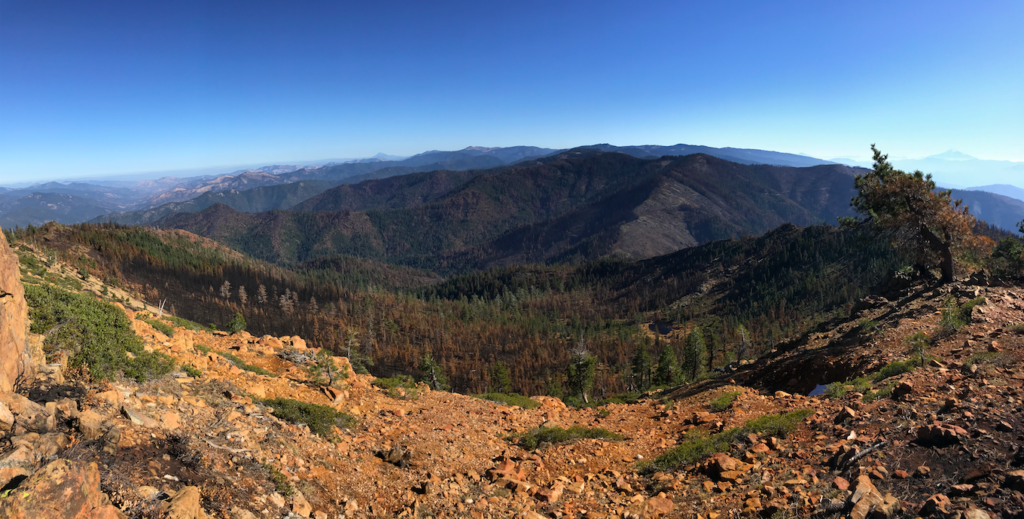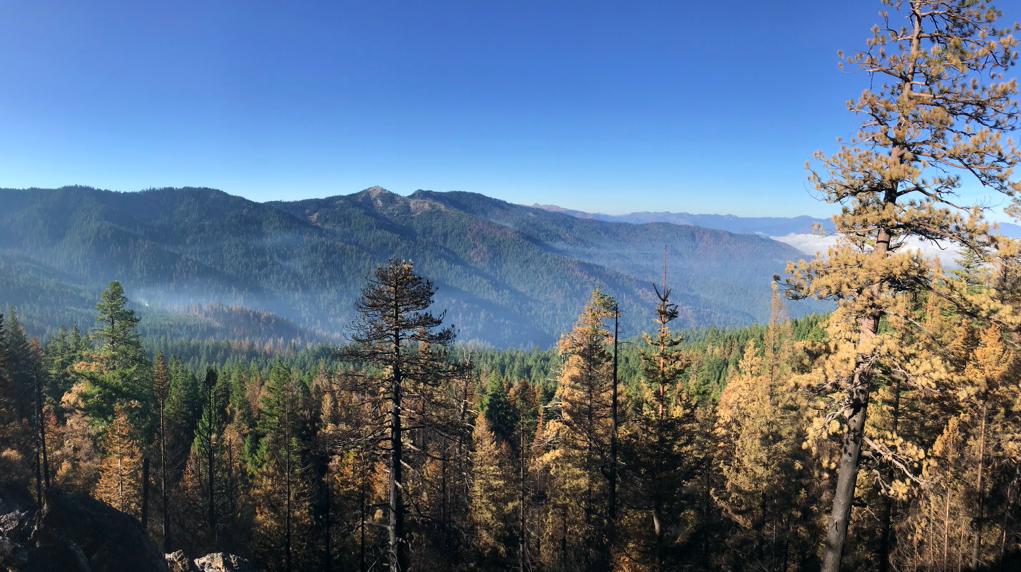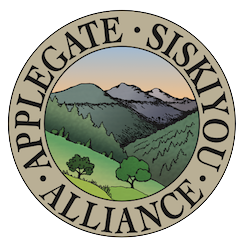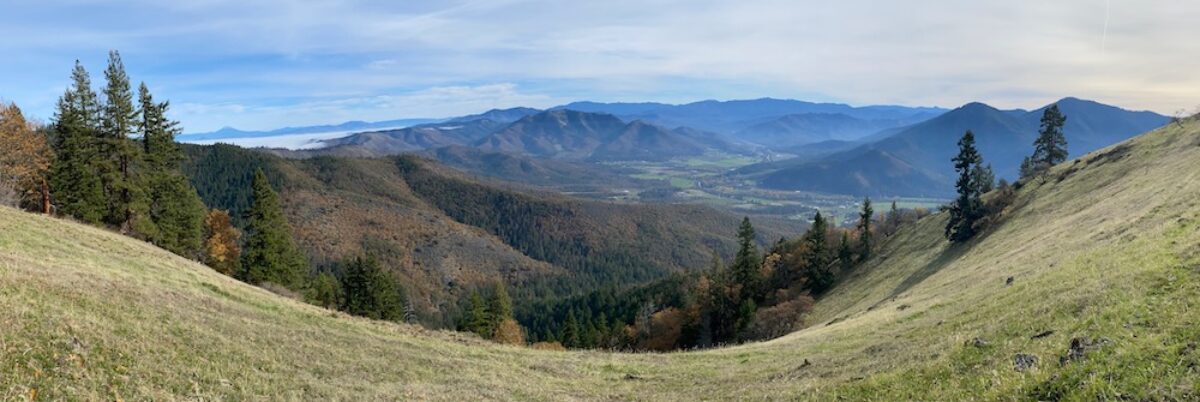

Four years later, Applegate Neighborhood Network is taking a look back at the Miller Complex Fire through our photo monitoring project. Many of the photos in this post allow one to compare the fire effects utilizing photos taken during fire activity, or soon after the fire had burned, with contemporary photos taken this summer in the same or approximate locations. These photos offer insights into how the fire has regenerated over time and demonstrate how fire activity translates to fire severity.
Four years ago today, lightning crashed and thunder echoed down the canyons of the Applegate River sparking twenty-seven small fires across the entire Applegate River watershed. After a few days, only five smoldering fires remained burning in remote reaches of the watershed. These included the Abney and Cook Fire above Cook and Green Creek and the Seattle Fire above the Middle Fork Applegate River. These fires later merged becoming the roughly 30,000-acre Abney Fire, the largest fire in the 2017 Miller Complex.
That same evening lightning sparked the Creedence Fire near Grayback Mountain at the headwaters of Carberry Creek, and the Burnt Peak Fire on the forested ridgeline dividing Palmer and Kinney Creek above the Upper Applegate Valley. Together these two fires burned over 6,000 additional acres, bringing the total acres burned in the Miller Complex to 36,400.
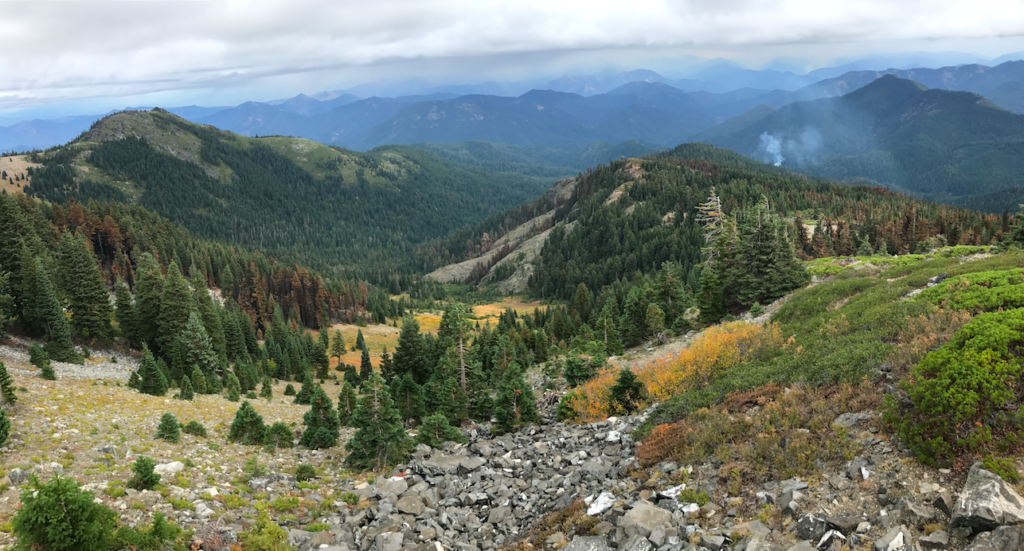
In the summer of 2017, residents of the Applegate endured dense smoke and active fire until rain and snow fell in mid-October, dousing the stubborn, unending backcountry fire. As fire activity increases across the West there are debates about the most appropriate strategies to adapt and evolve with a changing climate and with changing fire behavior. We are bombarded with fire information from across the West. The big destructive fires that burn communities are heavily covered in the media, but hundreds of other fires are burning throughout the West with far less media interest. Smaller fires in remote locations with beneficial fire effects rarely make the news, and the Miller Complex is a prime example of that. Only four years later the Miller Complex Fire is largely forgotten by the public, but remains a prominent footprint in our local landscape.
By taking a look back at the Applegate’s most recent major wildfire, there are lessons to be learned by our community and about the ecosystems that surround us. Residents on Palmer Creek Road and at Joe Bar had active fire on or near their properties and homes in the summer of 2017, but no homes or structures were lost. We should try to learn from the experience of these communities. These comparative photos provide a window into the world these communities lived with as they watched the fires burn, and have subsequently watched the areas regenerate in the post-fire landscape.


In all, the Miller Complex burned in a wide variety of plant communities and habitat types at 66% low, 27% moderate, and 7% low severity. The fire burned in remote locations inside our biggest, wildest wildland habitats in the Kangaroo and Condrey Mountain Inventoried Roadless Areas. In these areas it burned at mixed severity through subalpine forests and into deep mountains canyons filled with old-growth forest on the northern slope of the Siskiyou Crest.
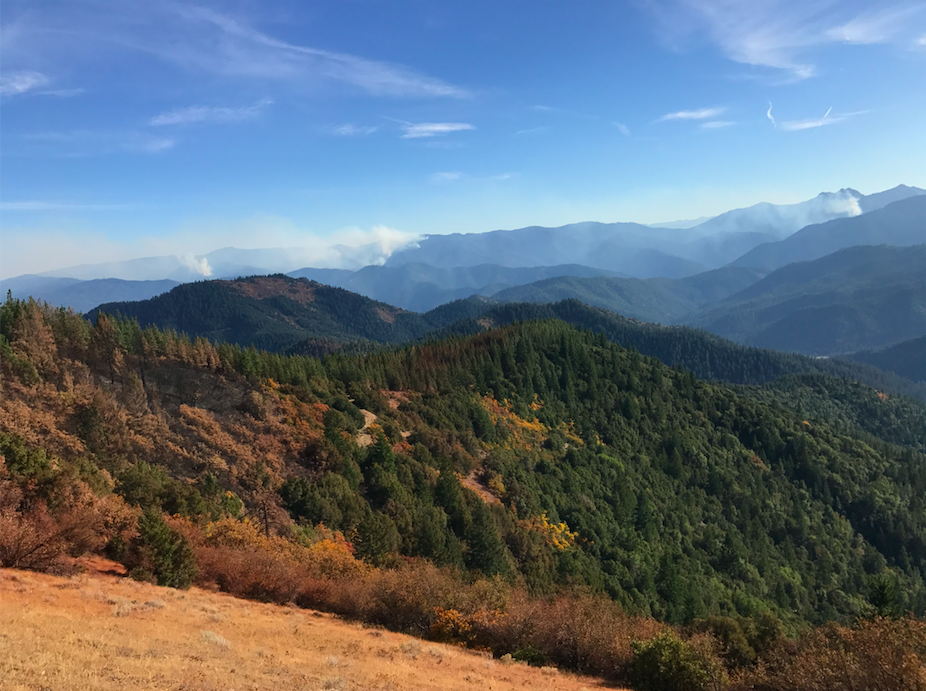
The Burnt Peak Fire also burned in largely inaccessible backcountry in the Collings-Kinney Inventoried Roadless Area, however, it burned through arid oak woodland, sunbaked chaparral, dry grasslands and low elevation forest, more indicative of our low elevation habitats. The Burnt Peak Fire backed down from the wildlands to the doorstep of the Upper Applegate Valley near Palmer Creek Road and was visible by many residents that live on or near Upper Applegate Road.
Check out the photo comparisons and keep the dialog going around how we can best live with wildfire in the Applegate while also protecting lives and property. Fire is an important part of our ecosystem and is an inevitable force of nature, but how we choose to live with and adapt to it now will shape our community for decades to come.
Comparison Photos During the Fire & After the Fire Four Years Later
Burnt Peak Fire






Abney Fire






























After Wildfires Come Wildflowers
After wildfires come wildflowers that are a boon for pollinators. The Miller Complex Fire area came to life with massive super blooms two and three years after the fires. These masses of flowers are stimulated to germinate due to the heat of the fire itself, as many species need heat to break down their seed coat and allow for seed germination. Other species germinate in response to chemical cues from smoke and ash that lets them know conditions are right to grow due to an increase in sunlight and abundant nutrients from ash that feed rapid plant growth. Four years on the super blooms have started to wane as shrubs have filled in burn areas in many locations. Many of the early seral shrubs that find their niche in burn areas, such as deer brush (Ceanothus integerrimus), are also beneficial for rejuvenation of the fire area because they can fix nitrogen from the air into the soil and help build soil in fire affected areas. The Siskiyou Mountains world-class botanical diversity is increased through wildfire, which many refer to as pyrodiversity.
Abney Fire Super Blooms
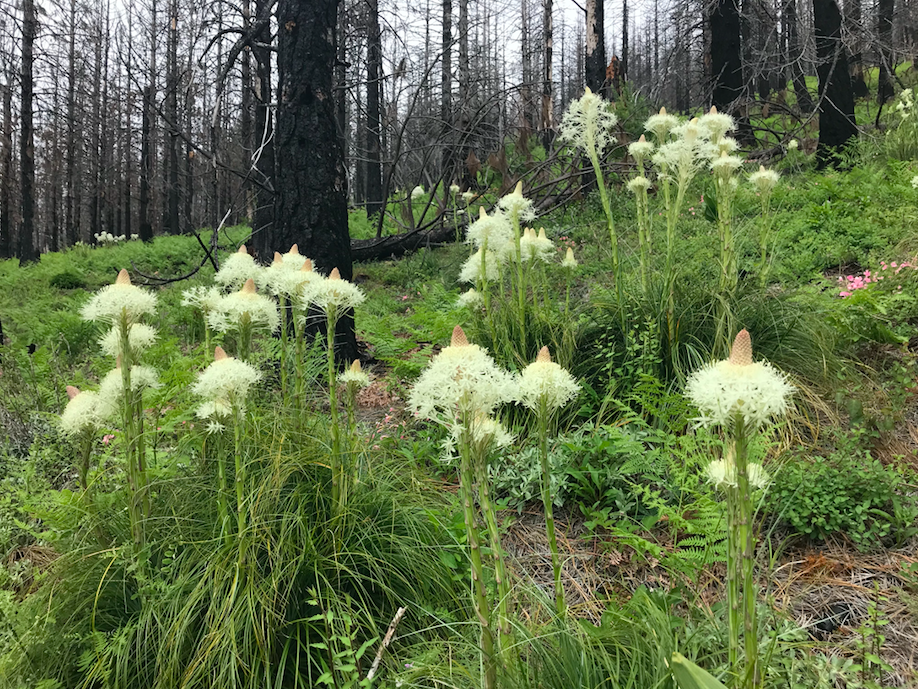
Beargrass 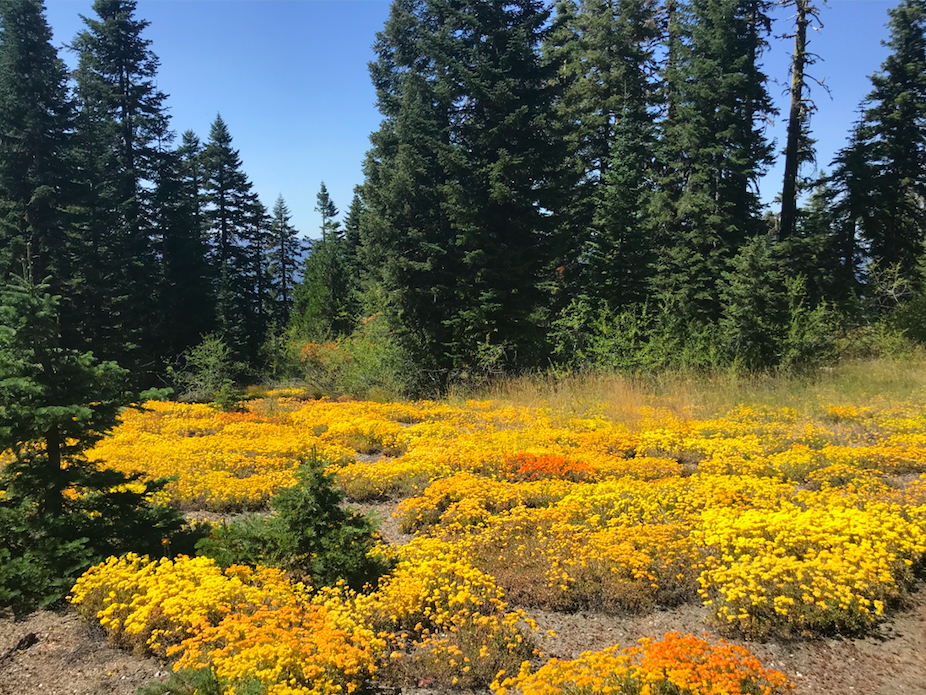
Sulphur buckwheat
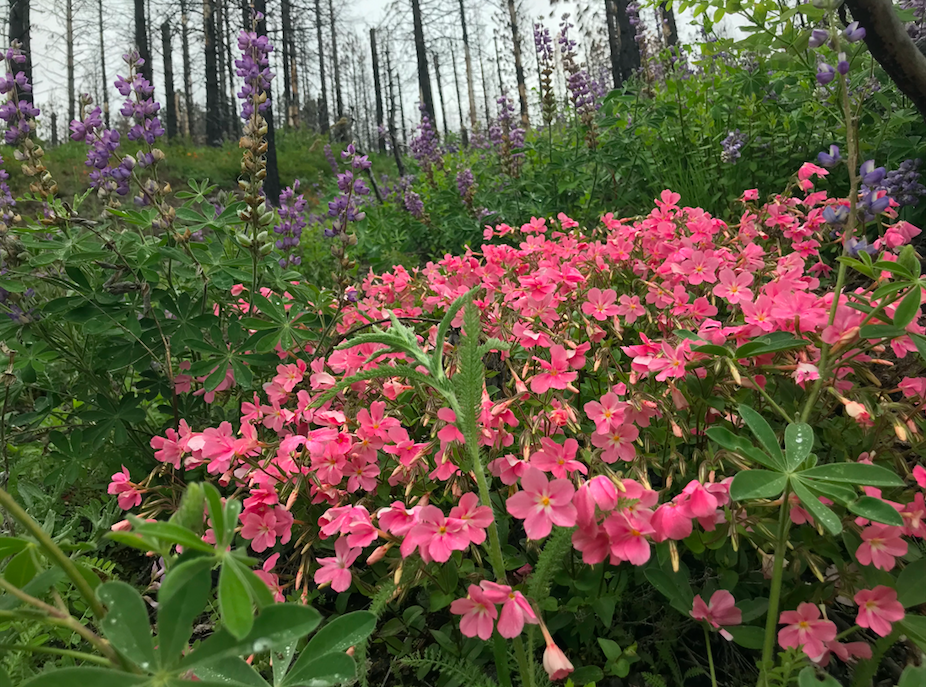
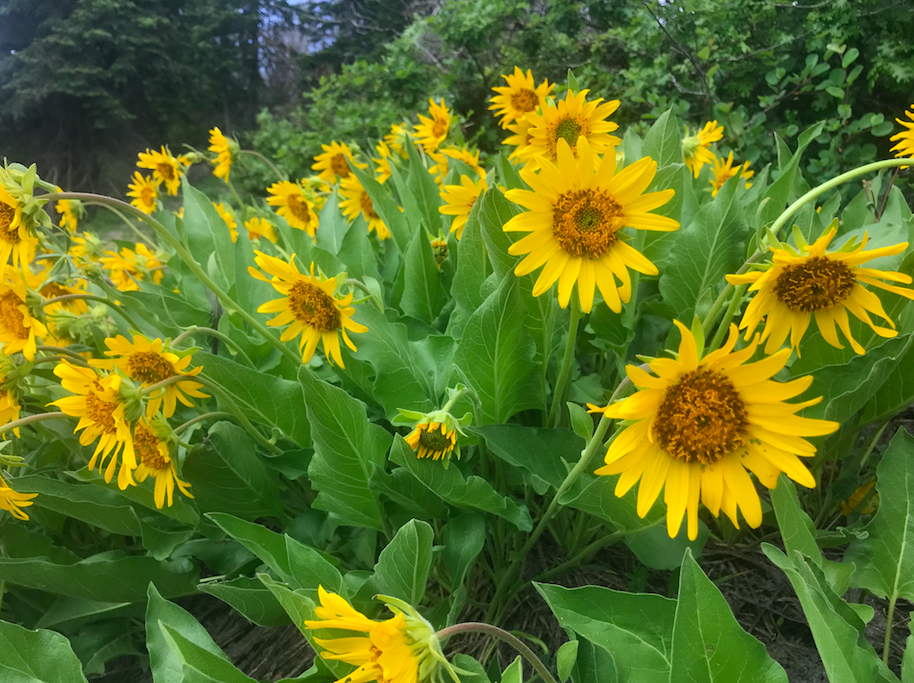
Balsamroot 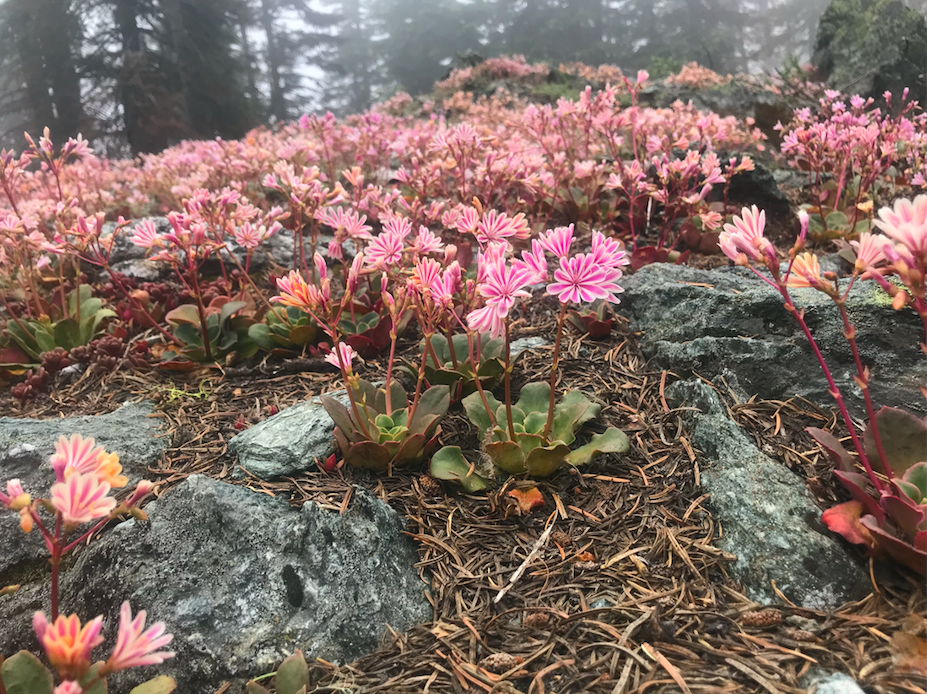
Siskiyou lewisia
This short video highlighted the wildflowers in the Abney Fire three years after the fire.
Burnt Peak Fire Super Blooms
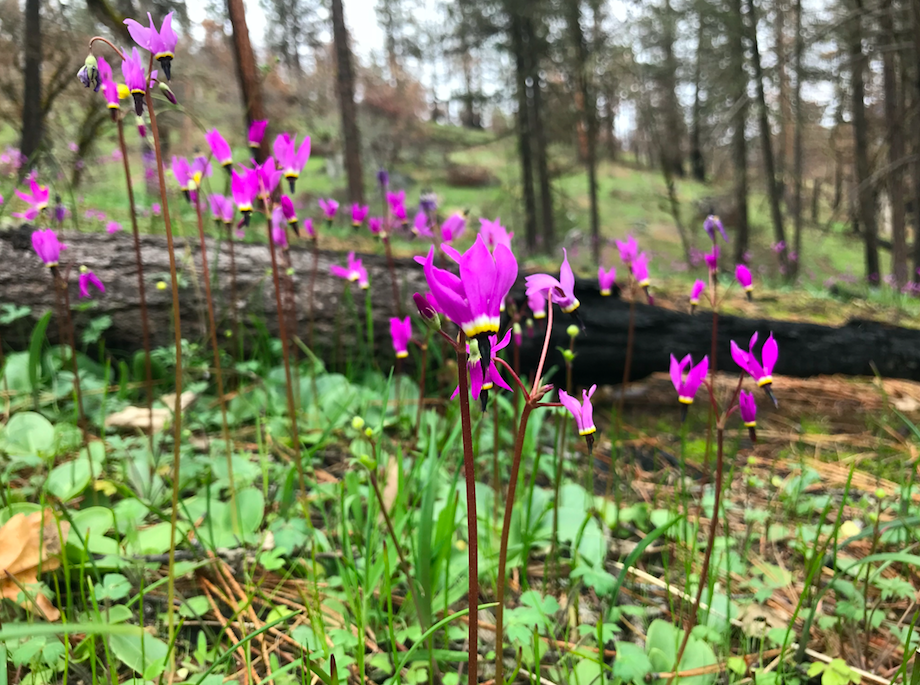
Shooting stars 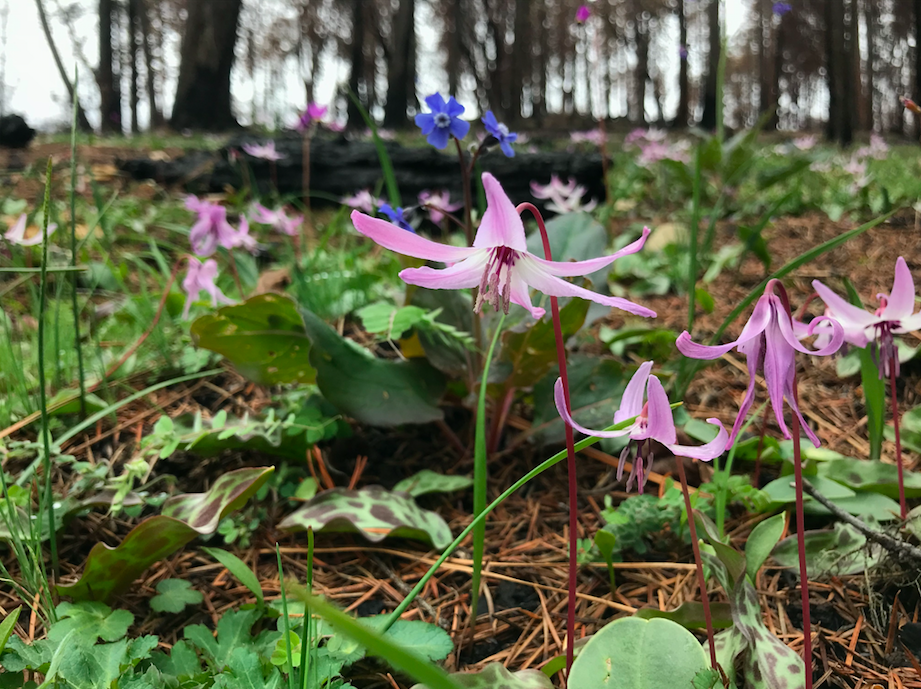
Henderson’s fawnlily
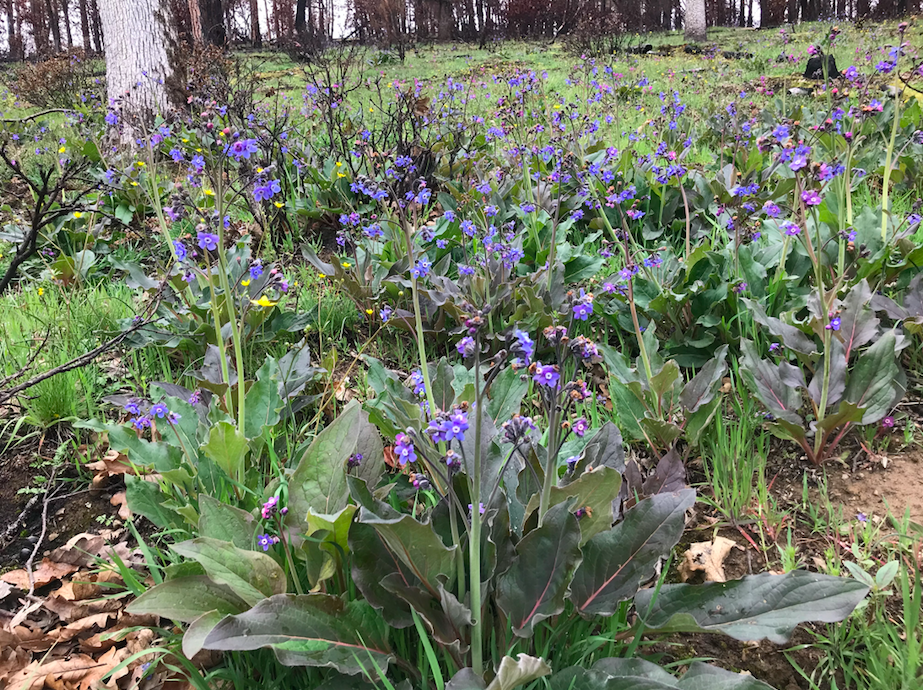
A Complex Mixed Severity Fire Mosaic
The Miller Complex Fire created various fire effects that overall could be classified as a mixed severity fire mosaic, with low, moderate and high severity fire effects present in different areas throughout the fire.
